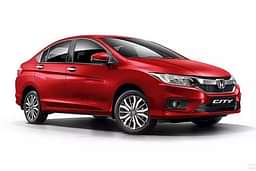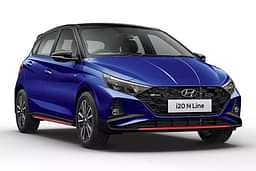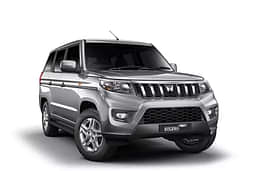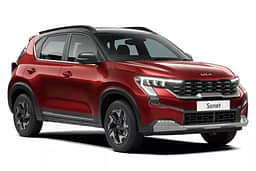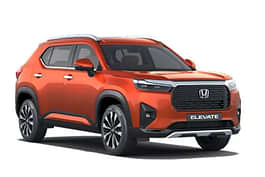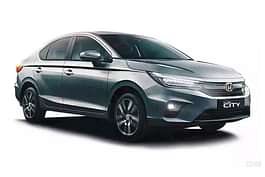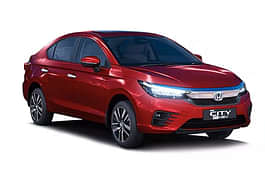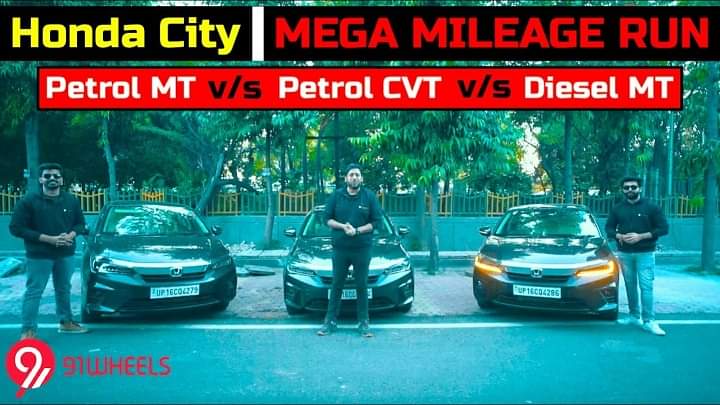
Ever since Honda launched the fifth-generation city we have been getting a lot of requests that when will the Fuel Economy run of the 2020 Honda City come. On December 19 our slots were cleared and we finally got hands on the media cars. Yes, plural because in this video not one but we calculate the fuel economy of three 2020 Honda City - petrol MT, petrol CVT and diesel MT.
Before we go any further and bring you all the updates about the fuel economy of 2020 Honda City for petrol MT, petrol CVT and diesel MT, make sure you are a member of our exclusive 91Wheels Telegram group where we bring all the recent updates related to the Indian Automotive Industry.
We picked up the cars from Noida and thereafter reached to the fuel station nearby. Please note, at the end of our trip we reached the same fuel pump and used the same nozzle too that was used in the beginning. Our main focus was to cover city roads and 25% of open roads as we come across. We filled till the third auto cut in the petrol MT first and followed the same process in the other two cars.
Since three cars were there so we had three drivers - Bunny, Nitin and Jatin. Bunny picked the petrol CVT, Nitin picked the petrol MT and the diesel MT was picked by Jatin. All the drivers were driving their cars in the jam-packed roads of Delhi and NCR. Do note that the AC was set to 24 degrees and was ON all the time.
After refuelling, we started our drive and stopped at a rest stop which not more than 5 km away from the pump. There we filled the tyre pressure to 32 PSI with our portable tyre inflator. Other than driving with a light right foot, keeping the tyre pressure in check is another thing one should take care off.

Mechanically, Honda City offers two engine options - a 1.5-litre, naturally aspirated petrol making 119 bhp with 145 Nm of peak torque. The oil burner makes 98 bhp with 200 Nm of peak torque. Both the engines get a 6-speed manual as standard and the petrol gets an optional CVT unit.

Bunny was driving the CVT version first so to further increase the fuel economy, he turned on the Eco mode. The displayed economy for the CVT version for the first 20 km was 17.8 kmpl, for the petrol manual it was 17.7 kmpl and the diesel manual delivered 24 kmpl. Do note that the Eco mode is present only in the petrol automatic only.
After driving the car for 50 km and taking our first break and noticed the fuel economy for all three cars. The diesel City delivered 28 kmpl, petrol manual stood at 19 kmpl and the CVT at 19.3 kmpl. The ARAI mark for the diesel is 24.1 kmpl, petrol manual is 17.1 kmpl and the petrol CVT is at 18.4 kmpl.
All the drivers switched their cars after the break and the new pattern followed Bunny driving the diesel, Nitin driving the petrol CVT and Jatin having the petrol MT. Everyone shared their opinion of driving the new City and how well the car is, be it feature-loaded to the brim or the dynamics.
We quickly passed the Delhi traffic only to find ourselves in the Gurgaon region where we have a small patch of curvy roads. We enjoyed the drive there and of course, the fuel economy dropped to a certain level. But hey, we wanted to showcase you the real-time experience.
At the 105 km mark, the figures dropped because of the curvy roads we took. The petrol MT showed 18.8 kmpl, petrol CVT was at 17.9 kmpl and the diesel stood at an all tight high of 28.6 kmpl. The diesel is surely a fuel-efficient one and makes sense for those looking to churn a few extra km on the odometer.
After switching the cars once again we drove towards Greater Noida from Gurugram. Bunny now took the petrol manual, Jatin was with the petrol CVT, and Nitin took the oil burner. The idea of switching the cars after every few km was to give you an idea of how the mileage gets affected when driven in city + highway and also with different drivers.
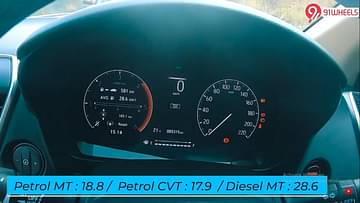
We reached the petrol pump at 174 km mark, and the petrol manual showcased 18.1 kmpl, diesel manual showed 28 kmpl, and the petrol CVT was at 19.6 kmpl. For the real-time, this is an impressive figure but still, we wanted to check like the old school method.
After refuelling again, the diesel gave us an impressive 27.56 kmpl, petrol MT gave 20 kmpl and the petrol CVT gave us 18.60 kmpl. Now that is our final fuel efficiency figures and this is what you get when you normally drive normally in city and highway drive.
So how did you like the video? Do let us know in the comment section below. Also, please subscribe to our official 91Wheels YouTube channel where we bring you all the latest two and four-wheeler videos.
